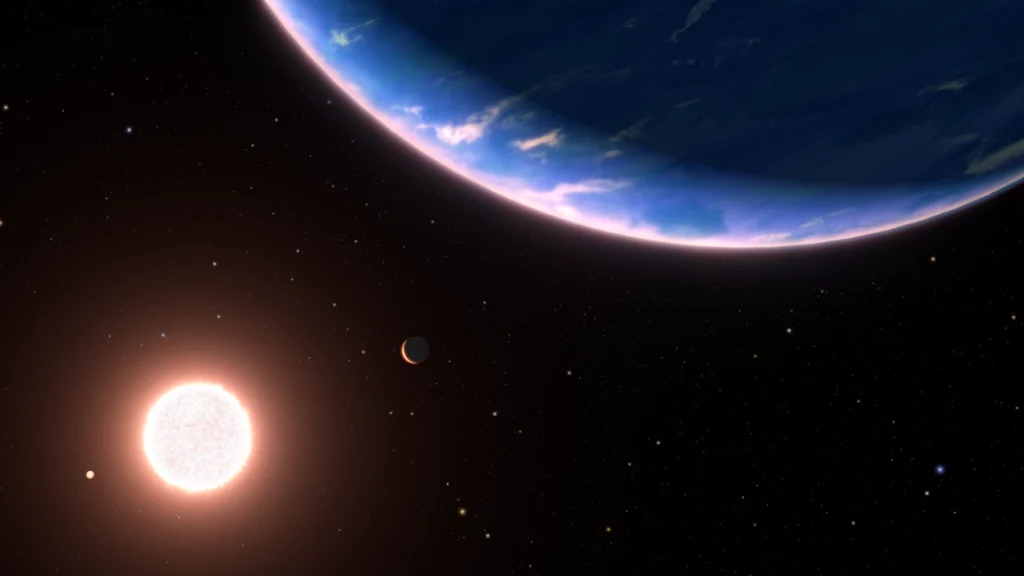Nasa’s groundbreaking James Webb Space Telescope (JWST) has identified an unprecedented find—a distant ‘steam world,’ consisting primarily of hot water vapor.
This planet, known as GJ 9827 d, lies approximately 100 light-years away in the constellation Pisces and is around two times the size of Earth.

This discovery marks the first confirmed evidence of such a planet, a concept that until now only existed in theory.
Study co-author, Ryan MacDonald, a NASA Sagan Fellow and astrophysicist at the University of Michigan, emphasized the importance of this find, highlighting its role in exploring unfamiliar planetary types that lie between Earth and Neptune in size, a phenomenon not observed in our own solar system.
He described this as a pivotal step toward the future detection of atmospheres on potentially habitable exoplanets.
The unique nature of GJ 9827 d is not only defined by its steam-like characteristics but also by the composition of its atmosphere.
Unlike similar-sized exoplanets, typically dominated by lighter molecules such as hydrogen and helium, this planet’s atmosphere comprises heavier molecules, akin to those found on Earth.
University of Montréal astrophysicist and lead author of the study, Caroline Piaulet-Ghorayeb, noted the significance of this revelation, recognizing it as a substantial advancement in exoplanet research.
Through a method known as transmission spectroscopy, researchers examined how starlight filtered through GJ 9827 d’s atmosphere, leading to the identification of its molecular makeup by observing missing light segments, much like viewing a rainbow.
Eshan Raul, a doctoral candidate at the University of Wisconsin-Madison, reflected on the monumental nature of this discovery, as it not only verifies the existence of water worlds but also opens up profound questions regarding what else might exist in the universe.
The atmospheric conditions of this rocky super-Earth are extreme, with its proximity to its host star causing surface temperatures to reach an estimated 660 degrees Fahrenheit.
It’s likened to what icy moons, such as Jupiter’s Europa and Ganymede, might be if they orbited closer to the sun, possessing dense, water-rich air without ice.
While the steamy environment of GJ 9827 d renders it inhospitable to life as understood on Earth, the discovery offers new avenues in the search for life-sustaining worlds.
The JWST’s advanced infrared capabilities continue to provide invaluable insights, shedding light on the diverse atmospheric compositions of exoplanets.
The success of this mission demonstrates that scientists are inching closer to the tantalizing possibility of discovering temperate, habitable worlds.
Researchers are poised to initiate extensive studies to locate rocky exoplanets orbiting red dwarf stars, which are abundant in the Milky Way, searching for atmospheres that might support life.
This first-ever confirmed steam world is a testament to the capabilities of the James Webb Space Telescope and the ongoing wonders of space exploration.
With each new discovery, we deepen our understanding of the universe and its potential to harbor life beyond our solar system.
